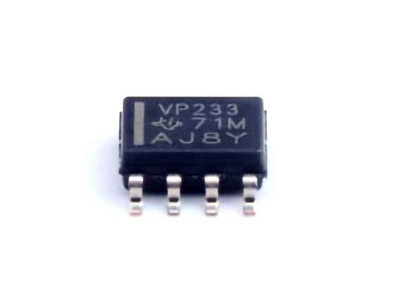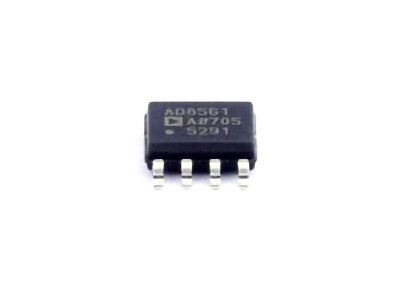The BQ76952PFBR is a cutting-edge Battery Management system (BMS) integrated circuit (IC) designed to manage and protect lithium-ion and lithium-polymer battery packs. This article delves into its application in battery Management systems and focuses on the protection circuit design, highlighting its role in ensuring safety, reliability, and efficiency in high-performance energy storage solutions.
BQ76952PFBR, battery management system, protection circuit, battery safety, lithium-ion battery, battery pack, battery protection, energy storage, BMS, integrated circuit
Understanding the Role of BQ76952PFBR in Battery Management Systems
As the demand for energy-efficient, high-performance devices continues to grow, particularly in electric vehicles (EVs), renewable energy storage, and portable electronics, battery management systems (BMS) have become integral in ensuring the longevity and safety of battery packs. One of the leading solutions in the field of BMS is the BQ76952PFBR from Texas Instruments, which combines advanced features, precision monitoring, and robust protection circuitry to optimize the performance of lithium-ion (Li-ion) and lithium-polymer (LiPo) battery packs.
Introduction to the BQ76952PFBR
The BQ76952PFBR is a sophisticated BMS IC designed to manage the voltage, temperature, and current of multi-cell lithium-based battery packs. It is capable of monitoring up to 15 series-connected cells, making it ideal for medium to large battery packs, such as those found in electric vehicles, energy storage systems, and industrial applications.
What sets the BQ76952PFBR apart is its ability to not only monitor the performance of each cell in real-time but also to provide advanced protections and safety features that safeguard both the battery pack and the system it Power s. These safety features are essential, as they help prevent the most common battery failures, such as overcharging, deep discharging, thermal runaway, and short circuits.
Key Features of the BQ76952PFBR
Multi-Cell Voltage Monitoring:
The BQ76952PFBR can monitor up to 15 individual battery cells, providing precise voltage measurements with an accuracy of ±8mV per cell. This capability ensures that each cell is charged and discharged optimally, preventing any one cell from being overcharged or undercharged, which can shorten battery life and increase the risk of failure.
Temperature Monitoring:
The IC includes built-in temperature sensors and supports additional external temperature sensors. Over-temperature conditions are one of the leading causes of battery degradation and thermal runaway. The BQ76952PFBR constantly monitors the temperature of the battery pack, ensuring the pack operates within a safe temperature range.
High-Speed Current Sensing:
Accurate current sensing is essential for determining battery state-of-charge (SOC) and state-of-health (SOH). The BQ76952PFBR integrates high-speed current sensing with a resolution of up to ±1% to ensure precise measurements of current during both charging and discharging cycles. This enables accurate battery state predictions and ensures efficient operation.
Cell Balancing:
The BQ76952PFBR includes an integrated passive cell balancing feature, which is crucial for ensuring that all cells in the battery pack maintain equal charge levels. Imbalances in cell voltages can lead to inefficient operation and can damage cells over time. The IC helps prevent this issue by balancing the cells automatically during charging.
Integrated Protection Features:
As a key component of any BMS, the protection features of the BQ76952PFBR are highly advanced. The IC provides real-time protection against overvoltage, undervoltage, overcurrent, short circuits, and temperature extremes. These protection mechanisms ensure that the battery pack operates within safe limits, preventing damage to the cells and ensuring the safety of the system.
Low Power Consumption:
The BQ76952PFBR is designed to minimize power consumption, ensuring that the BMS does not drain the battery during operation. This feature is critical in applications where long battery life is a priority, such as in portable electronics or remote energy storage systems.
Applications of the BQ76952PFBR in Battery Management Systems
The versatility of the BQ76952PFBR allows it to be used in a wide range of battery management applications, from consumer electronics to industrial and automotive applications. Below are some of the primary use cases for this advanced BMS IC:
Electric Vehicles (EVs):
In electric vehicles, the BQ76952PFBR helps manage the battery pack by monitoring voltage and temperature, balancing cells, and providing real-time protection against overcurrent and overcharging. The IC ensures the battery pack operates efficiently, extends its lifespan, and enhances the overall safety of the vehicle.
Energy Storage Systems (ESS):
For large-scale energy storage systems, such as those used in renewable energy applications, the BQ76952PFBR helps maximize the performance and safety of the battery packs. The IC allows for precise monitoring of battery health and ensures that the system can efficiently store and release energy.
Portable Electronics:
In portable consumer electronics like smartphones, laptops, and drones, the BQ76952PFBR helps ensure that the battery pack operates safely and efficiently. The IC helps extend battery life by preventing overcharging and deep discharging, while also balancing the cells to maintain optimal performance.
Industrial Applications:
The BQ76952PFBR can also be used in industrial battery packs, including those for robotics, automated guided vehicles (AGVs), and backup power systems. Its ability to monitor and protect multi-cell battery packs is ideal for industrial-grade applications where reliability and long service life are essential.
Benefits of Using the BQ76952PFBR in Battery Management Systems
The integration of the BQ76952PFBR into a battery management system offers a number of advantages, including:
Enhanced Safety:
With its comprehensive suite of protection features, including overvoltage, undervoltage, overcurrent, short circuit, and thermal protection, the BQ76952PFBR ensures the battery pack is safe from common failure modes, preventing hazards such as fires or explosions.
Improved Efficiency:
The precise voltage and current monitoring capabilities of the BQ76952PFBR help optimize charging and discharging cycles, which improves the overall efficiency of the battery system and extends the operational life of the battery pack.
Cost-Effective Solution:
By incorporating multiple monitoring and protection functions into a single chip, the BQ76952PFBR reduces the need for additional discrete components, helping to lower the overall cost of the battery management system.
Scalability:
The BQ76952PFBR is scalable, meaning it can be used in a variety of battery pack configurations, from small consumer electronics to large-scale energy storage systems. This flexibility makes it an ideal choice for a wide range of applications.
Protection Circuit Design and Implementation with the BQ76952PFBR
In any battery management system, the protection circuit plays a crucial role in ensuring the safety and reliability of the battery pack. The BQ76952PFBR integrates several key protection features, and understanding how to design and implement these protection circuits is essential for creating an effective BMS.
Key Protection Mechanisms of the BQ76952PFBR
The protection circuit design for the BQ76952PFBR is built around several key functions that safeguard the battery pack against common issues such as overcharging, deep discharge, overcurrent, and thermal runaway. Below is an overview of these protection mechanisms and how they can be implemented in a BMS design.
1. Overvoltage Protection
Overvoltage occurs when the voltage across a cell or the entire battery pack exceeds safe operating limits, which can lead to cell degradation, leakage, or even thermal runaway. The BQ76952PFBR has an integrated overvoltage protection mechanism that automatically disconnects the battery pack from the charging circuit when an overvoltage condition is detected.
To design the protection circuit for overvoltage, the BQ76952PFBR continuously monitors the voltage of each individual cell in the battery pack. If the voltage of any cell exceeds the predefined threshold, the IC triggers a protection response to disconnect the charger, preventing further voltage increase. The IC will also notify the system controller via a communication interface , allowing for appropriate corrective action.
2. Undervoltage Protection
Undervoltage protection is necessary to prevent the battery pack from discharging too much, which could lead to irreversible damage to the cells. When the voltage of a cell drops below a certain threshold, the BQ76952PFBR will trigger an undervoltage warning or disconnect the load from the battery.
The undervoltage protection mechanism ensures that each cell stays within a safe discharge range, preventing over-discharge and maximizing the longevity of the battery pack. The IC continuously monitors the voltage of each cell and triggers the protection circuit when necessary.
3. Overcurrent Protection
Overcurrent conditions can occur during sudden load changes or charging cycles, which can cause excessive heat generation and potential damage to the battery cells. The BQ76952PFBR is equipped with overcurrent protection features that monitor the current flowing through the battery pack and disconnect the load or charger if an overcurrent situation arises.
The overcurrent protection circuit can be designed to trigger based on a peak current limit or a continuous overcurrent threshold. By monitoring the current in real-time, the BQ76952PFBR ensures that the battery pack is not subjected to unsafe current levels, protecting both the battery and the system.
4. Short Circuit Protection
A short circuit in the battery pack can lead to rapid heat buildup and significant damage to the battery cells. The BQ76952PFBR includes short circuit protection that immediately detects a short circuit condition and disconnects the battery pack from the load or charger to prevent further damage.
This protection mechanism is critical for ensuring the safety of the battery pack and preventing catastrophic failures. In the event of a short circuit, the BQ76952PFBR can quickly disconnect the affected section of the battery, protecting the rest of the pack from potential damage.
5. Thermal Protection
Overheating is one of the most dangerous conditions for a battery pack. Excessive heat can lead to thermal runaway, where the battery cells become unstable and potentially cause fires or explosions. The BQ76952PFBR includes integrated temperature sensors that continuously monitor the temperature of the battery pack.
When the temperature exceeds a safe limit, the IC will trigger thermal protection by disconnecting the charger or load, thus preventing the battery from overheating. The temperature sensors can be placed on the battery pack or within the IC, and their readings are continuously evaluated to ensure the pack operates within safe thermal limits.
Conclusion
The BQ76952PFBR is an advanced, highly integrated solution for managing and protecting lithium-ion and lithium-polymer battery packs. With its comprehensive set of features—including multi-cell voltage monitoring, temperature monitoring, current sensing, cell balancing, and robust protection circuits—it provides a complete solution for ensuring the safety, performance, and longevity of modern battery-powered systems.
By implementing the various protection mechanisms offered by the BQ76952PFBR, designers can create battery management systems that are not only efficient but also safe and reliable. Whether in electric vehicles, energy storage systems, or portable devices, the BQ76952PFBR helps optimize battery performance and ensures that batteries operate within safe limits, thus preventing costly failures and enhancing the overall user experience.
If you are looking for more information on commonly used Electronic Components Models or about Electronic Components Product Catalog datasheets, compile all purchasing and CAD information into one place.


